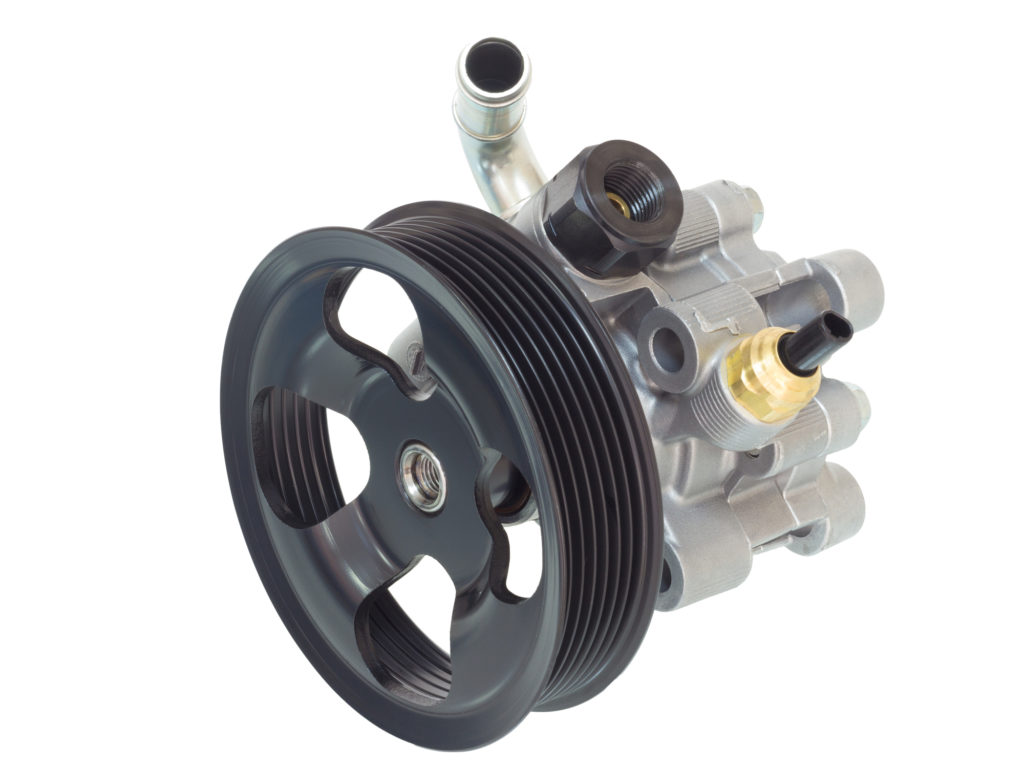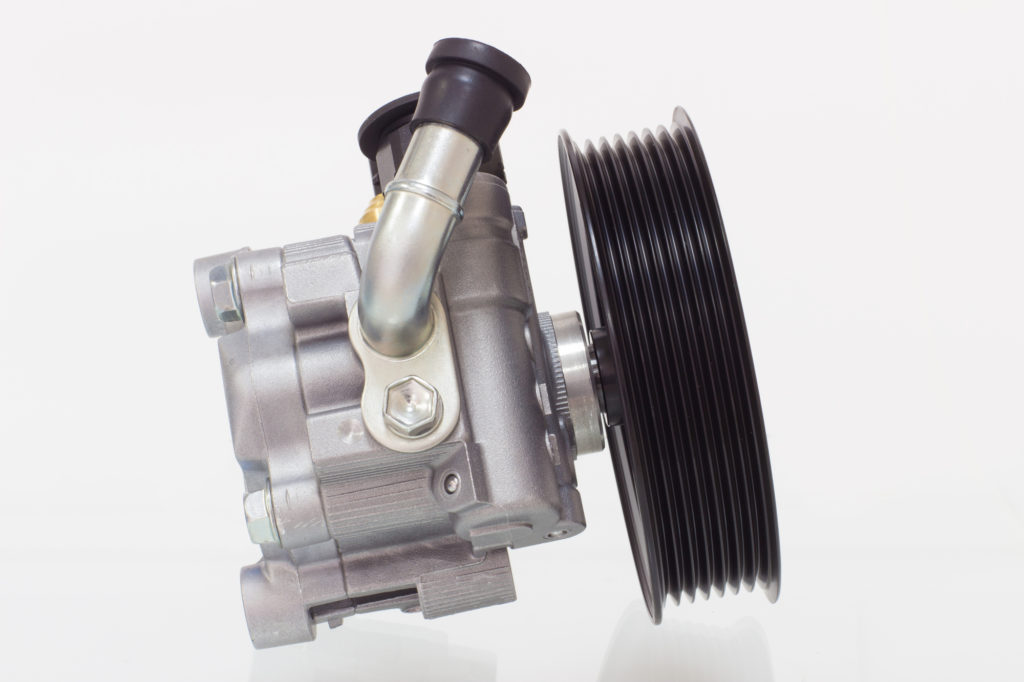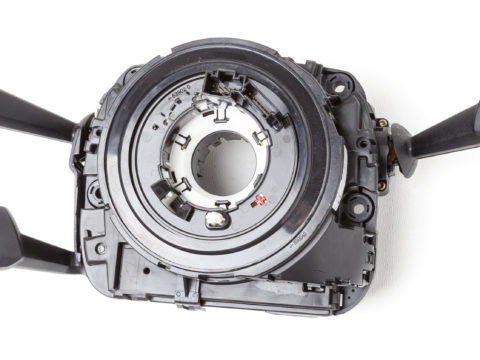This article will discuss some of the tell-tale signs of power steering pump failure and what options are available for replacement. We will start with a brief overview of the system itself.

A power steering system in a car uses hydraulic fluid to assist the driver in turning the steering wheel of their vehicle. The pump for the power steering pressurizes the fluid in this system and makes the entire process possible.
There are typically two types of power steering pumps; mechanical and electrical.
Contents
Where Is the Power Steering Pump Located?
Power steering pumps are typically located high up on the engine, near the serpentine belt, or on top of the engine where it meets the crankshaft. Some electrical power steering pumps can be located more towards the base of the steering column.
Before doing any work on your vehicle, it’s essential to refer to the specific model specifications to figure out what type of pump you’ll be dealing with to gather its exact location.
What Does a Power Steering Pump Do?
The power steering pump circulates power steering fluid under pressure, enabling the hydraulic piston to move in the steering gearbox. This allows drivers in cars with these systems to turn with ease. Being able to properly and safely steer the vehicle is extremely important. This is why maintaining this system should be a priority for maintenance.
Symptoms of a Bad Power Steering Pump
Below we will review some clues that your power steering pump may need maintenance or replacement.
1) Squealing or Whining Noise When Turning the Wheel
Often an early sign of issues with the power steering, a vehicle that gets noisy when turned is likely having some kind of problem with the power steering. It may just be low on power steering fluid, or it could be signs of a more significant issue.
2) Difficulty Turning the Wheel
If turning the wheel becomes noticeably more stiff or difficult, then the power steering pump could be failing.
3) Squealing Noise on Vehicle Start-Up
It’s not just noisy steering that could be a sign of trouble. A squealing noise upon the vehicle starting could also be an indication that there’s an issue with the power steering. Typically this squealing sound takes a moment or two to stop after the car has been started.
4) Reddish-Brown Puddles
A cracked power steering pump can leak fluid. Red/brown puddles underneath your vehicle could be a sign that the pump is damaged and needs replacement.
5) Discolored Power Steering Fluid
If you have the power steering fluid checked and it’s a grey color or has metal flakes in it, there could be an issue at hand signaling that the pump is failing.
6) Vehicle Is Slow to Turn
If steering isn’t necessarily tricky but is relatively slow to respond, this could be a sign that the pump is failing. Vehicle response on turns should be easy and immediate.
7) Low Power Steering Fluid
Assuming no cracks or leaks, it is possible for the power steering pump to still occasionally run low on fluid. Fluid should be maintained in accordance with the recommended levels.
Sometimes simply making sure there is enough fluid will alleviate the problem. But if the fluid level drops in a short amount of time, there may be an issue with the pump itself.

Power Steering Pump Repair Options
So you’ve determined that there is an issue with the pump that requires servicing or replacement. So which option should you pursue?
DIY Repair
Power steering pumps are not typically considered repairable items within the realm of DIY mechanic work. It is generally advised that a complete replacement of a bad pump be performed if you’re taking the DIY route.
DIY Replacement
Replacing your power steering pump will save a good chunk of money compared to having it performed by a pro. But do realize that this procedure involves the need for tools, flushing the power steering fluid, possibly using a pulley press, etc.
Some of this may not be an issue for someone who’s done previous DIY vehicle repairs. But for a newbie or someone unfamiliar with the systems on their vehicle, the process could be a bit intimidating.
Also, note the difficulty of this procedure could be significantly affected by the make and model of your vehicle. Make sure you know what you’re getting into before diving in and getting your hands dirty.
Professional Repairs
If a vehicle has been serviced properly and the issue isn’t too extensive, a professional mechanic may repair rather than replace the power steering pump. This is typically a little bit more economically friendly of an option.
However, take note of your mechanic’s advice, as doing a repair when a replacement is warranted might be more costly in the long run if you have to bring the vehicle right back into the shop.
Professional Replacement
If the damage to the pump is too extensive or the vehicle has not been well maintained, then a professional will likely recommend a full-on replacement.
Having a professional do the work of replacing the pump with a new part will likely be the most expensive route. However, if you lack the tools or know-how needed to do this process, it’s likely the safest bet. This is particularly true if the pump replacement is a very involved process for a particular make and model of a car.
Power Steering Service Cost
Power steering pump servicing is recommended to be done through a professional. Costs range from $200-$350
Power Steering Pump and Hose Replacement Cost
DIY power steering pump replacement is typically just the cost of the new pump, which can range between $100-$200. To have the pump replaced by a professional typically ranges between $500-$800, depending on the vehicle’s make and model.
To have the hose for the pump replaced costs can vary between $180-$450 when done by a professional. The part itself will run between roughly $60-$240. The wide range of prices is due to the cost difference between aftermarket and OEM (manufacturer) parts.














